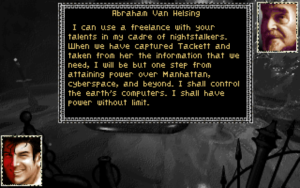IFComp 2019: The Legendary Hero Has Failed
The Legendary Hero Has Failed is a last-moments-before-the-apocalypse piece, like Anna Anthropy’s Queers In Love at the End of the World and I think one of the Fingertips games in Apollo 18+20. I’m pretty sure it’s also Legend of Zelda fanfic. I’ve only played a couple of the Zelda games, but the end of the world here is a result of the moon crashing into the earth, and furthermore, it’s described as grimacing while it does so, and isn’t that something that happens in one of the Zelda games? Reinterpreting things from popular media and investing them with more meaning is of course a fine thing, but you can easily wind up with something that’s only of interest to people sufficiently familiar with the source material, and I think that might be happening here.
It’s basically about human reactions to impending doom. You’re sitting around a campfire with four friends, watching the world end, and have the option to talk to them, comfort them, rage at the moon, play Fizzball, get high… not a lot of options, really, all told. Maybe these are characters from the original game. Maybe not. All I can say is that I’m not really very attached to them even after talking to them in this game. I think I was inclined to be uncharitable toward them because the game decided to annoy me at the very beginning by delaying the appearance of the link that lets you start the game. There are a couple of other moments like that within the body of the game, and it’s even more irritating there, because the whole thing is on a real-time timer. The moon crashes into the earth after 5 minutes of play no matter what, and the in-game pauses waste precious seconds of that. It’s a pernicious combination.
And yet, inconsistent hobgoblin that I am, I also wound up feeling like the timer was too long! Compare it again to Queers: the timer there is a mere 10 seconds, because it’s trying to make you feel like there’s nowhere near enough time to do everything you want to do. Whereas five minutes is more than enough time to exhaust your options in Legendary Hero if you don’t dawdle. The approach of the grimacing moon becomes less of a constraint on your actions than the mere fact that there isn’t much to do. And I really don’t think that’s what the author was going for.
 Comments(1)
Comments(1)